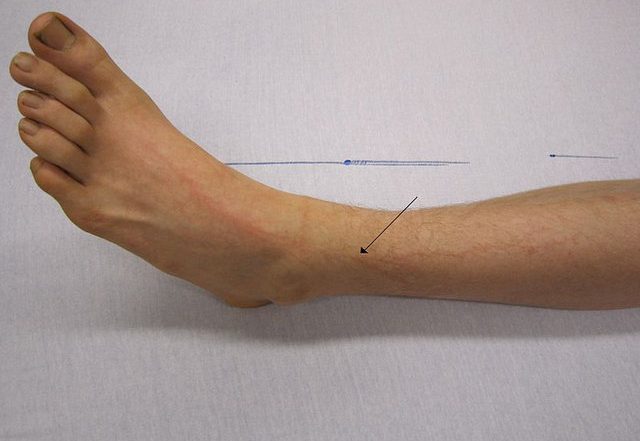A 40-year-old male with an unknown medical history is brought to the emergency department by ambulance after being found unconscious in his yard on a stormy day.
The patient is unresponsive and pulseless with cold, mottled extremities. His skin exam is shown below. Which of the following is the most likely inciting event in this patient?
A. Drug reaction
B. Hypothermia
C. Lightning strike
D. Plant poisoning
E. Scorpion sting
Correct answer: C. Lightning strike
A Lichtenberg figure is an erythematous feathering or branching pattern on the skin and is pathognomonic for lightning injury. No treatment is necessary for Lichtenberg figures, although if found they should prompt consideration of other sequelae of lightning injury. This patient was found pulseless with cold, mottled extremities, likely due to arterial vasospasm from overstimulation of the autonomic nervous system, another consequence of lightning injury.
Sudden death from a lightning strike is primarily due to cardiopulmonary arrest secondary to stunning of the myocardium and sustained asystole. Respiratory arrest can result from diaphragmatic paralysis or depolarization and paralysis of the medullary respiratory center. Return of spontaneous circulation is often achieved prior to recovery of the respiratory center and patients may present apneic with a pulse.
Incorrect answer choices:
Adverse skin reactions due to systemic drugs include maculopapular skin reactions, urticaria, angioedema, erythema multiforme, Stevens-Johnson syndrome or toxic epidermal necrolysis (Choice A). The rash presented does not have any papules or bullae.
Hypothermia causes diffuse vasoconstriction, and a patient who is hypothermic is more likely to look diffusely mottled as opposed to just in the extremities. Although this patient is also likely hypothermic to some degree, the Lichtenberg figures are central to the correct answer in this question as the inciting event (Choice B).
External exposures to poisonous plants typically cause allergic skin reactions such as hives accompanied by urticaria, which is not mentioned in this presentation, other than simply being outside (Choice D).
Scorpion stings are initially painful without much erythema or edema (Choice E). They typically later develop a local erythematous reaction circumferentially from the location of the sting.
References:
Schissler, K, Pruden, C. Pediatric Electrical Injuries in the Emergency Department: An Evidence-Based Review. EB Medicine. December 2, 2021. Accessed June 15, 2022. https://www.ebmedicine.net/topics/trauma/pediatric-electrical-injuries (full free access for residents)
Bailey C. Chapter 218. Electrical and Lightning Injuries. In: Tintinalli JE, Stapczynski JS, Ma OJ, et al. Tintinalli’s Emergency Medicine: A Comprehensive Study Guide. 8th ed. New York: McGraw Hill Professional; 2016.
Bowers RC, Vivolo JC. Disorders due to Physical & Environmental Agents. In: Stone C, Humphries RL. eds. CURRENT Diagnosis & Treatment: Emergency Medicine, 8eNew York, NY: McGraw-Hill.
Davis, Chris et al. “Wilderness Medical Society Practice Guidelines For The Prevention And Treatment Of Lightning Injuries”. Wilderness & Enviroental Medicine 23.3 (2012): 260-269. Web.





